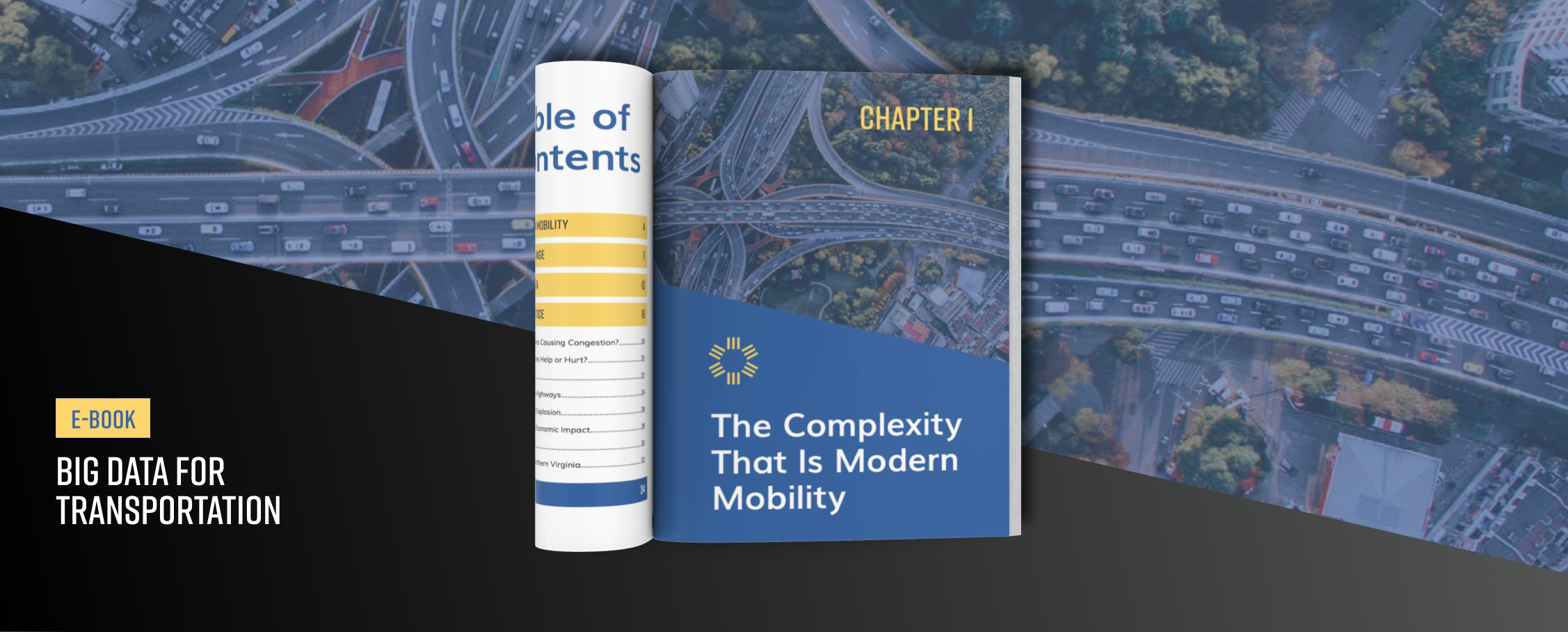While the transportation industry may not be in crisis, it is certainly being heavily disrupted. Drastic changes to existing transportation modes and an influx of new technologies are driving some big challenges, and existing data gathering methods simply can’t keep up. This excerpt from Chapter 1 of our eBook, Big Data for Transportation, unpacks some of the key challenges.
Aging Transportation Infrastructure
Much of our existing transportation infrastructure wasn’t designed to age past the turn of the century, nor to handle the demands of our growing population and increasingly extreme weather. The Society of Civil Engineers estimates that the U.S. must spend $4.6 trillion by 2025 to fix our roads, bridges, dams, and other infrastructure, and regions are struggling to evaluate, prioritize, and fund these repairs.
Population growth, a high employment rate, and a lack of affordable housing create vexing challenges like more vehicle miles traveled (VMT) and greenhouse gas emissions caused by commuting, and more vehicles on the road during peak times.
The Challenge of Commuting
The average commute grew by 18 seconds from 2016 to 2017, adding up to an extra 2.5 hours on the road per vehicle each year, according to the American Community Survey. Cars will increase VMT by 1.2% annually, according to the Federal Highway Administration (FHWA).
Freight traffic doubled from 1990 to 2013, with 66% of America’s freight moving by truck. Truck VMT will grow an average annual rate of almost 2% over the next 20 years. That demand, combined with a shortage of commercial freight drivers creates interest in driverless vehicles before communities have planned or funded infrastructure requirements.
Increasing Transportation Complexity
While transportation officials work hard to solve traditional challenges, entirely new factors are complicating things. For example, navigation apps like Waze and Google Maps encourage more drivers to cut through neighborhoods instead of staying on highways and other main arteries.
Topics like congestion pricing are being discussed before residents and officials have a chance to evaluate the effect on all populations. And everyone seems to be asking how much of this can be managed by Big Data technology in “smart cities” or the “Internet of Things” in the future.
How Can We Do More With Less?
As these changes unfold, it is increasingly critical for transportation experts to:
- Prioritize projects to make the biggest impact for citizens.
- Make informed decisions based on recent, empirical data, not guesses or highly vocal stakeholders.
- Catch up on measuring “old school” modes like biking and walking, which have been traditionally more under-represented than cars.
- Maintain social equity and environmental justice, providing access and support for outlying areas and the underserved.
- Make effective decisions for positive global environmental impact.
- Foster public engagement, so that residents, constituents, and public officials understand, can respond to questions about, and support planned mobility efforts.
- Comprehensively and quickly measure the performance of transportation initiatives, enabling adjustment and optimization in real time.
Unfortunately, many traditional study and analysis techniques cannot keep up with these new demands.
That’s where transportation Big Data comes in. Download our eBook to learn more about how modern transportation analytics are addressing these challenges. Big Data for Transportation outlines best practices for how metrics should be collected, prepared, and validated, including eight real-world case studies.


